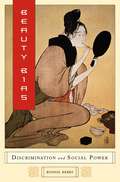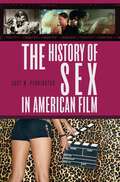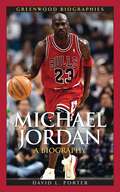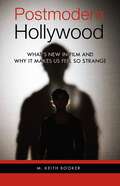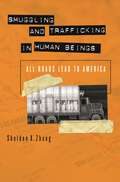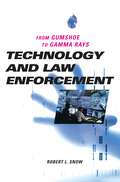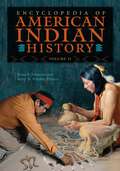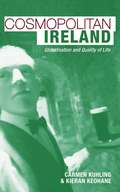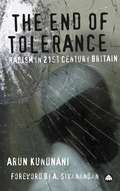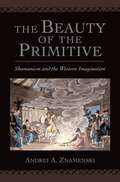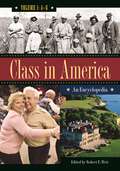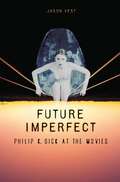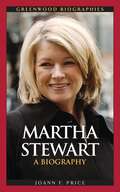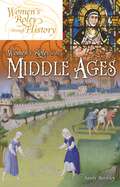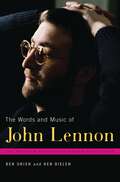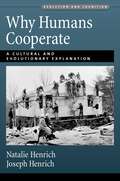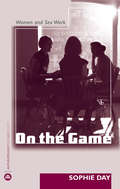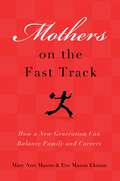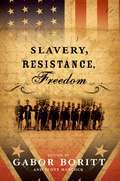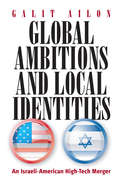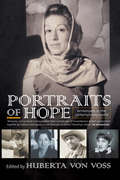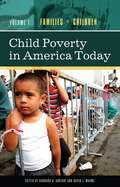- Table View
- List View
24/7: How Cell Phones and the Internet Change the Way We Live, Work, and Play
by Jarice HansonJust as the automobile radically changed people's lives at the beginning of the 20th century, so too has the revolution in online services (including blogging, podcasting, videogaming, shopping, and social networking) and cell-phone use changed our lives at the turn of the 21st century. In addition, many other services, activities, and devices—including the Palm Pilot, the BlackBerry, the iPod, digital cameras, and cell cameras—have been made possible by the combination of these two technologies. Whereas the automobile allowed people for the first time to work in cities and live comfortably in the suburbs, extending the long commute beyond the limits previously circumscribed by public transportation, the Internet and cell phone allow us to interact with others from around the world—or a few hundred miles—from where we work or live, giving rise to the telecommuting phenomenon and allowing us to stay in touch with friends and families in the new virtual environment. As Hanson demonstrates in her new book, these technologies enable us to work and play 24/7, anytime, anywhere.What does this mean for us as individuals and for society as a whole? What are the social implications of this technological revolution that we have witnessed in the short span of about 20 years? Do people of different generations use these technologies in the same ways, or do they adopt them to support their communication habits formed at different times of their lives? How does the illusion of control provided by these technologies affect the way we think about what is meaningful in our lives? Hanson examines the wide-ranging impact of this change. How do individuals posting their viewpoints on the Internet affect democracy? Is it possible to ever completely prevent identity theft over the Internet? How permanent is information stored on the Internet or on a hard drive? Do cell phones change the way people think about privacy or the way they communicate with others? Does email? Do videogames teach new social principles? Do cell phones and the Internet change traditional communication behaviors and attitudes? Hanson discusses these crucial issues and explores to what extent individuals do have control, and she assesses how social and governmental services are responding to (or running from) the problems posed by these new technologies.
Beauty Bias: Discrimination and Social Power
by Bonnie BerrySociety has always been fixated on looks and celebrities, but how we look has deep ramifications for ordinary people too. In this book, Bonnie Berry explains how social inequality pertains to prejudice and discrimination against people based on their physical appearance. This form of inequality overlaps with other, better-known forms of inequality such as those that result from sexism, racism, ageism, and classism. Social inequality regarding looks is notable in a number of settings: work, medical treatment, romance, and marriage, to mention a few. It is experienced as limitations on access to social power. Berry discusses the pressures to be attractive and the methods by which we strive to alter our appearance through plastic surgery, cosmetics, and the like.Berry also discusses cultural factors, such as the manner in which globalization of media, advertisements, and movies have trended toward homogenization, whereby we are all encouraged to appear tall, thin, white, and with Northern European features even if we are none of those things. She also analyzes the underlying social forces such as economic incentives that, on the one hand, channel us to be as physically acceptable as possible via the sale of diet pills and skin lighteners, and on the other hand, encourage us to accept ourselves as we are by selling us plus-size clothing. The book concludes with suggestions for equal rights extended to all regardless of appearance. Here, Berry describes budding social movements and grassroots endeavors toward an acceptance of looks diversity.
The History of Sex in American Film
by Jody PenningtonAlthough American films, especially Hollywood fare, are often belittled for their one-dimensional portrayal of sex, a close examination of the history of sex in American motion pictures reveals that American cinema has actually represented sex in myriad ways. A more complete understanding of the ways in which sex has been represented onscreen requires an approach that pays equal attention to cinematic techniques and to the diversity of sexual values and behaviors in American society. It is necessary to frame this discussion within the multiple contradictions of an industry that has both repressed and represented sex with equal fervor over the course of its history; of audiences that have both taken offense at and flocked to films with sexual themes; and a body politic that has regulated the sexual in popular culture even as its discourse has been saturated with sexual images and topics. The History of Sex in American Cinema moves seamlessly between general film and social history to clarify how exactly sex has been expressed cinematically, and how we have responded to those expressions as a culture.In March of 1965 the Supreme Court put into motion legal changes that marked the end of local film censorship as it had existed since the early years of the twentieth century. In Hollywood that same year, The Pawnbroker was released with a Production Code Seal of Approval, despite nudity that violated that Code. As sexual liberation occurred onscreen, parallel developments occurred in the way we lived our lives, and by the end of the 1960s Americans were having sex more often, and with more partners, than ever before. There was also now a public debate surrounding sexuality, and one of the loudest and most continually active voices in this debate was that of American film.This work begins with an examination of some of the earliest altercations in what later came to be known as the culture wars, and follows those skirmishes, more often than not provoked by American film, up to the modern day. By looking at how sex in the cinema has contributed to the demise of the fragile consensus between liberals and conservatives on freedom of expression, The History of Sex in American Film suggests a perspective from which today's culture wars can be better understood. This work combines close readings of many representative films-including Who's Afraid of Virginia Woolf?, The Graduate, Blue Velvet, Philadelphia, L.A. Confidential, and Closer-with a social and historical account of the most significant changes in American sexual behavior and sexual representation over the past fifty years.
Michael Jordan: A Biography (Greenwood Biographies)
by David L. PorterWith the possible exceptions of boxer Muhammad Ali and baseball player Babe Ruth, no athlete has made a greater impact on American society-or in the world-than Michael Jordan. Follow the life of one of the most recognizable athletes and living brands inside this engaging and balanced biography.He is among the best-known and wealthiest athletes in the history of organized sports. With the possible exceptions of boxer Muhammad Ali and baseball player Babe Ruth, no athlete has made a greater impact on American society-or in the world-than Michael Jordan. Follow the life of one of the most recognizable athletes and living brands inside this engaging and balanced biography.When basketball stars Larry Bird and Magic Johnson retired in the early 1990s, Michael almost single-handedly propelled the NBA to stratospheric levels of success and international visibility. As a player for the Chicago Bulls, he generated instant crowd thrills with his record-setting drives and dunks, selling countless books, newspapers, videotapes, NBA game tickets, and hours of television time. The NBA promoted Michael, basing its popularity on his image as the greatest showman in sports history. Yet his sports hero status extends beyond NBA records. Michael changed the game by becoming the most effectively marketed athlete of his generation. Nike and many other companies rode-and continue to ride-on the coattails of Air Jordan's legend. Author David Porter highlights Jordan's on and off the court accomplishments and examines his relationship with Chicago Bulls' coaches, his commercial endorsements, and his current role as part-owner of the Charlotte Bobcats. A chronology, photos, career stats, and a bibliography of print and electronic resources round out this biography of one of the most influential athletes of the twentieth century.
Postmodern Hollywood: What's New in Film and Why It Makes Us Feel So Strange
by Prof. M. Keith BookerPostmodernism is essential to American culture today. We can see its manifestations on billboards and on television; we can hear its tone on the radio and in everyday conversation; and we can even sense its outlook in how we live our lives. This volume presents an accessible and brief summary of postmodernism, especially as it pertains to American cinema-one of the central players and leading lights in the development of this cultural attitude. Four distinct sections investigate postmodernist fragmentation, musical use, and pastiches of previous television shows and cinematic genres in such films as Quentin Tarantino's Pulp Fiction, David Lynch's Mulholland Drive, and Sofia Coppola's Marie Antoinette.Discussions of the phenomenon of postmodernism have established certain characteristics that are typical of postmodernist culture. These characteristics include formal fragmentation, a tendency toward a particular kind of nostalgia, and the use of materials and styles borrowed from previous films and other cultural products. This volume presents a brief summary of the characteristics that have typically been associated with postmodernism, especially as they pertain to film. It illustrates those characteristics with discussions of a wide variety of American films of the past thirty years, noting how those films participate in the phenomenon of postmodernism. Emphasis is on popular, commercial films, rather than the more esoteric, experimental products that have sometimes been associated with postmodern film.Booker's work contains detailed discussions of a wide variety of American films—including classics like Sullivan's Travels and The Last Picture Show, and recent successes such as Scream, Natural Born Killers, Memento, Moulin Rouge, and Fight Club—noting how these films participate in the phenomenon of postmodernism, and how they have helped to shape its current form.
Smuggling and Trafficking in Human Beings: All Roads Lead to America
by Sheldon X. ZhangComing to America to make a better life has long been a dream of many from around the world, even if it means being smuggled into the country to gain entry. This book examines how human smuggling and trafficking activities to the United States are carried out and explores the legal and policy challenges of dealing with these problems. Zhang covers the scope and patterns of global human trafficking and smuggling activities; the strategies and methods employed by various groups to bring individuals into the United States; major smuggling routes and venues; the involvement of organized criminal organizations in transnational human smuggling activities; and the challenges confronting the U.S. government in combating these activities.
Technology and Law Enforcement: From Gumshoe to Gamma Rays
by Robert L. SnowAlthough for much of the mid-20th century police departments across the U.S. had been reluctant to embrace new technology, depending instead on traditional police techniques, detectives in Los Angeles finally departed from this practice when they found themselves stymied in their attempts to solve the infamous Night Stalker serial murder case. This murderer and rapist had gone on a deadly rampage during the spring and summer of 1985, and though the police used every traditional police technique, they could not solve the crime. Finally, in desperation, they decided to do something different: use what was then the latest, cutting edge-technology. This new technology, the laser print finder, worked perfectly and the police arrested the Night Stalker the next day. Following this astonishing success, police departments across the nation suddenly began clamoring to obtain all kinds of new technology to assist them in solving crimes. This rush to embrace the latest technology hasn't slowed in the intervening 21 years.This book takes readers through every major branch of law enforcement and shows how technology has radically changed police department operations during the last two decades. It also shows how these changes continue today as technology advances and refines techniques already in practice. Beginning with the Night Stalker case, the author illustrates how the use and reliance on new technologies in solving crimes has made policing and detective work more accurate and efficient in capturing and convicting criminals (and courts more recently in releasing innocents convicted of crimes). Capitalizing on the interest in all things forensic, this book illuminates the behind the scenes technologies that go into solving crimes and keeping dangerous criminals off the street. Snow covers DNA and fingerprint technologies, vehicle technologies, undercover work, bomb detection, and other methods. Using many real life examples and first hand anecdotes, he shows how technology has become part and parcel of criminal justice efforts to solve crimes.
Encyclopedia of American Indian History [4 volumes]: [4 volumes]
This new four-volume encyclopedia is the most comprehensive and up-to-date resource available on the history of Native Americans, providing a lively, authoritative survey ranging from human origins to present-day controversies.From the origins of Native American cultures through the years of colonialism and non-Native expansion to the present, Encyclopedia of American Indian History brings the story of Native Americans to life like no other previous reference on the subject. Featuring the work of many of the field's foremost scholars, it explores this fundamental and foundational aspect of the American experience with extraordinary depth, breadth, and currency, carefully balancing the perspectives of both Native and non-Native Americans.Encyclopedia of American Indian History spans the centuries with three thematically organized volumes (covering the period from precontact through European colonization; the years of non-Native expansion (including Indian removal); and the modern era of reservations, reforms, and reclamation of semi-sovereignty). Each volume includes entries on key events, places, people, and issues. The fourth volume is an alphabetically organized resource providing histories of Native American nations, as well as an extensive chronology, topic finder, bibliography, and glossary. For students, historians, or anyone interested in the Native American experience, Encyclopedia of American Indian History brings that experience to life in an unprecedented way.
Cities: Small Guides to Big Issues (Small Guides to Big Issues)
by Jeremy SeabrookWhat are the global challenges of the twenty-first century? Every year tens of millions of people abandon rural areas for life in the city. With education, health care and even safe water in short supply, cities risk becoming sites of violent conflict for future generations. And yet world governments are doing little to address these demographic shifts.*BR**BR*Jeremy Seabrook offers a vivid portrait of the lives of people who migrate from impoverished villages to towns and cities, the changes they face, and the impact these changes have on their psyche and well-being. Contrasting the attitudes of today's governments with those of the past, the book provides a sharp critique of global policies, and an ideal introduction to the impact of urbanisation on modern life.*BR**BR*The Small Guides to Big Issues series de-bunks myths and raises questions about the global economic and political system and how it works. They are designed for campaigners and activists, students and researchers, and anyone interested in looking behind the headlines. Produced in partnership with Oxfam, each book provides an informative and thought-provoking guide to current trends and debates, and what needs to happen in order to end poverty and injustice.
Cosmopolitan Ireland: Globalisation and Quality of Life
by Carmen Kuhling Kieran KeohaneIreland is going through a period of unprecedented economic and cultural growth and renewal. These changes are due in part to neoliberal policies that have attracted foreign investment. *BR**BR*The globalization of Ireland's economy has had major social consequences. Living standards are rising quickly. Emigration has reversed. Catholicism has been secularized, laws on divorce and sexuality have been liberalized and Ireland has become an urban society for the first time. *BR**BR*But there is stark inequality and social exclusion; epidemics of depression, alcoholism, and obesity; traditional values and community are declining; and there is deep ambivalence towards immigrants. Ireland's economy is globalized, but is Irish society cosmopolitan? Wealth has increased, but has quality of life improved? The authors explore the developments of the last 15 years, capturing the intensity of the debates that make up the new cosmopolitan multi-cultural Ireland.
The End of Tolerance: Racism in 21st Century Britain
by Arun KundnaniIs Britain becoming a more racist society? Arun Kundnani looks behind the media hysteria to show how multicultural Britain is under attack by government policies and vitriolic press campaigns that play upon fear and encourage racism.*BR**BR*Exacerbated by the attacks of 9/11 and 7/7, Kundnani argues that a new form of racism is emerging that is based on a systematic failure to understand the causes of forced migration, global terrorism and social segregation. The result is a climate of hatred, especially against Muslims and asylum seekers. Yet the government presses ahead with flawed policies and anti-terrorist legislation that creates further resentment, alienation and criminalisation. *BR**BR*What can be done? This timely and precise analysis is a useful account of why racism is now thriving - and what we can do to stop it.
The Beauty of the Primitive: Shamanism and Western Imagination
by Andrei A. ZnamenskiFor the past forty years shamanism has drawn increasing attention among the general public and academics. There is an enormous literature on shamanism, but no one has tried to understand why and how Western intellectual and popular culture became so fascinated with the topic. Behind fictional and non-fictional works on shamanism, Andrei A. Znamenski uncovers an exciting story that mirrors changing Western attitudes toward the primitive. The Beauty of the Primitive explores how shamanism, an obscure word introduced by the eighteenth-century German explorers of Siberia, entered Western humanities and social sciences, and has now become a powerful idiom used by nature and pagan communities to situate their spiritual quests and anti-modernity sentiments. The major characters of The Beauty of the Primitive are past and present Western scholars, writers, explorers, and spiritual seekers with a variety of views on shamanism. Moving from Enlightenment and Romantic writers and Russian exile ethnographers to the anthropology of Franz Boas to Mircea Eliade and Carlos Castaneda, Znamenski details how the shamanism idiom was gradually transplanted from Siberia to the Native American scene and beyond. He also looks into the circumstances that prompted scholars and writers at first to marginalize shamanism as a mental disorder and then to recast it as high spiritual wisdom in the 1960s and the 1970s. Linking the growing interest in shamanism to the rise of anti-modernism in Western culture and intellectual life, Znamenski examines the role that anthropology, psychology, environmentalism, and Native Americana have played in the emergence of neo-shamanism. He discusses the sources that inspire Western neo-shamans and seeks to explain why lately many of these spiritual seekers have increasingly moved away from non-Western tradition to European folklore. A work of intellectual discovery, The Beauty of the Primitive shows how scholars, writers, and spiritual seekers shape their writings and experiences to suit contemporary cultural, ideological, and spiritual needs. With its interdisciplinary approach and engaging style, it promises to be the definitive account of this neglected strand of intellectual history.
Class in America [3 volumes]: An Encyclopedia [3 volumes]
In the United States, social class ranks with gender, race, and ethnicity in determining the values, activities, political behavior, and life chances of individuals. Most scholars agree on the importance of class, although they often disagree on what it is and how it impacts Americans. This A-Z encyclopedia, the first to focus on class in the United States, surveys the breadth of class strata throughout our history, for high school students to the general public. Class is illuminated in 525 essay entries on significant people, terms, theories, programs, institutions, eras, ethnic groups, places, and much more.This useful set is an authoritative, fascinating source for in-demand information on key aspects of our culture and society and helps researchers to narrow down a broad topic. Class is revealed from angles that often intersect: through history, with entries such as Founding Fathers, the Industrial Revolution, Westward Expansion; through economics, with entries such as Dot.com Bubble, Robber Barons, Chicago School of Economics, Lottery, Wage Slaves, Economic Equal Opportunity Act, Stock Market, Inheritance Taxes, Wal-Mart, Welfare; through social indicators such as Conspicuous Consumption, the Hamptons, WASP, Homelessness, Social Climbing; through politics with entries such as Anarchism, Braceros, Heritage Foundation, Communist Party, Kennedy Family; and through culture through entries such as Country Music, The Great Gatsby, Television, and Studs Terkel. Class is also approached from ethnic, sexual, religious, educational, and regional angles. Special features include an introduction, timeline, suggested reading per entry, cross-references, reader's guide to topics, and thorough index. Sample entries: Immigration, Education, Labor Movement, Pink-Collar Workers, AFL-CIO, Strikes, Great Depression, Jacob Riis, Literature, the Rockefellers, Slavery, Music, Academia, Family, Suburbia, McMansions, Taxation, Segregation, Racism, Ivy League, Robber Barons, Philanthropists, Socialites, Religion, Welfare, the American Dream, Dot.com Millionaires, Equal Opportunity, Founding Fathers, Wage Slaves, Industrial Revolution, Capitalism, Economics, Appalachia, Horse Racing, Gender, Communist Party, Country Clubs, Religion, American Indians, Conspicuous Consumption, Studs Terkel, Film, Class-Consciousness, Work Ethic, Media, Television, Puritans, Homelessness, Status Symbols, Assimilation/Melting Pot, Art, Westward Expansion, Poverty, The Great Gatsby, Stock Market, Working Poor, Gated Communities, the Hamptons, Social Climbing, Crime, Lottery, Elitism, WASP, American Dream, Noam Chomsky, Fortune Magazine
Future Imperfect: Philip K. Dick at the Movies
by Jason P. VestPhilip K. Dick was one of the most incisive, subversive, and entertaining authors of the last half of the twentieth century, and the increasing levels of respect and interest that his fiction and films have generated since the 1982 release of Blade Runner have made a comprehensive assessment of these films a virtual necessity. Future Imperfect is the only work to examine the cinematic adaptations of Dick's work in their entirety. Not all cinematic adaptations of Dick's work have been equally successful, but they have all at least made a similar effort to capture his evocative, paranoid, and compassionate view of humanity's precarious place in a fallen world—a world where rapidly proliferating technology, stultifying bureaucracy, and widespread political chicanery threaten both our bodies and our minds. Author Jason Vest seeks here to answer the question of how filmmakers as diverse as Ridley Scott, Paul Verhoeven, Steven Spielberg, and Richard Linklater have each, in their turn, expanded, extrapolated, and diverged from Dick's fiction in order to translate Dick's powerful and challenging insights on to the screen in a visual and yet still literary form.Dick's is a singular voice in American literature, and Future Imperfect aims to gauge exactly how well the cinematic adaptations of Dick's work have captured his unique vision of the human future, and how deeply Dick's storytelling abilities have influenced the development of science-fiction films from Blade Runner on. Students and general readers interested in science-fiction literature and film should find this an incredibly valuable work, as should film enthusiasts concerned with the issue of adaptation itself. Author Jason Vest is an expert in both American literature and the science-fiction genre. This marks the first book-length investigation of Dick's influence on the science-fiction genre, and also includes some of the more extended criticism on several seminal science fiction films.
Martha Stewart: A Biography (Greenwood Biographies)
by Joann F. PriceIn our fame-crazed culture, she's known as a diva of domesticity, entrepreneur, media magnate, and a living brand. She has legions of fans and at the same time, many detractors. To her fans, Martha Stewart is a homemaking maven, the do-it-yourself doyenne. To her detractors, she's taken the American woman backwards, espousing an unobtainable ideal. Love her or hate her, this much is true: Martha Stewart is a self-made woman who has risen from her modest upbringing to become one of the most successful and wealthiest businesswomen in history. This intriguing biography provides a balanced portrait of Martha Stewart's professional and personal life, from her childhood as the oldest daughter in a family of six children to her brief career as a securities trader, to becoming a bestselling author in the 1980s and CEO of Martha Stewart Living Omnimedia in the 1990s. At the height of her power, Stewart was convicted of lying to investigators about a stock sale. Author Joanne F. Price documents the twists and turns of the trial, Stewart's five-month prison term, the highly publicized comeback following her release from prison in March 2005.
Women's Roles in the Middle Ages (Women's Roles through History)
by Sandy BardsleyInformation about women in this truly fascinating period from 500 to 1500 is in great demand and has been a challenge for historians to uncover. Bardsley has mined a wide range of primary sources, from noblewomen's writing, court rolls, chivalric literature, laws and legal documents, to archeology and artwork. This fresh survey provides readers with an excellent understanding of how women high and low fared in terms of religion, work, family, law, culture, and politics and public life. Even though medieval women were divided by social class, religion, age, marital status, place and period, they were all subject to an overarching patriarchal structure and sometimes could transcend their inferior status. Numerous examples of these exceptional women and their words are included.Chapter 1 examines religion, focusing on women's roles in the early Christian church, the lives of nuns and other professional religious women such as anchoresses and Beguines, the participation of Christian laywomen, and the experiences of Jewish and Islamic women in Western Europe. The second chapter examines women's work, looking in turn at the kinds of work performed by peasant women, townswomen, and noblewomen. Women's roles within the family form the subject of the third chapter. This chapter follows women throughout the typical lifecycle - from girl to widow - examining the expectations and experiences of women at each stage. Chapter 4, Women and the Law, focuses on the ways in which laws both restricted and protected women. It also considers the crimes with which women were most often charged and surveys laws regarding marriage and widowhood. Women's roles in creative arts form the basis of the fifth chapter, Women and Culture. This chapter examines women's roles as artists, authors, composers, and patrons, as well as investigating the ways in which women were represented in works produced by men. Finally, chapter 6 discusses women's experiences in politics and public life. While women as a group were typically banned from holding positions of public authority, some found ways to get around this stricture, while others were able to exercise power behind the scenes. The final chapter thus encapsulates a major theme of this book: the interplay between broader patriarchal forces that limited women's status and autonomy and the role of individuals who were able to overcome or circumvent such forces. Medieval women were, as a group, subordinate to their husbands and fathers, but certain women, under certain circumstances, evaded subordination.
The Words and Music of David Bowie (The Praeger Singer-Songwriter Collection)
by James E. PeroneAll Music Guide's Stephen Thomas Erlewine has written, Even when he was out of fashion in the '80s and '90s, it was clear that Bowie was one of the most influential musicians in rock, for better or worse. In this comprehensive analysis of David Bowie's career, author James Perone examines the many identities and styles Bowie has developed over the years, and in so doing provides a stunning chronicle of creativity at work. Born David Jones in a London suburb in 1947, David Bowie changed his name in the late '60s to avoid confusion with the singer David Jones of The Monkees. This name change would turn out to be a highly prescient act: for in incorporating an exceptionally wide variety of styles, Bowie would become the most notorious chameleon of the rock era. Due in large part to his early success in the glam rock subgenre and his claims of homosexuality (dismissed by many writers as a ploy to generate public interest and record sales), Bowie raised serious issues about sexual orientation in rock music, regardless of whether or not his claimed homosexuality was genuine or part of his on-stage character. His regular use of theatrical personae also raises interesting issues concerning authenticity and the perception of authenticity in rock music.Although Bowie has been primarily an album artist, his recordings of Fame, Golden Years, Let's Dance, China Girl, Blue Jean, and Dancing in the Streets, all made it into the Billboard top 10 singles charts. Of these, all but one was written or co-written by Bowie. Even more notable are the songs he wrote and recorded that have made an impact far in excess of their chart standing. These include Space Oddity, Rebel, Rebel, Changes, Modern Love, and Young Americans. From his early 1970s albums like Hunky Dory and The Rise & Fall of Ziggy Stardust and the Spiders from Mars-in both of which he assumed the character of the fictional, androgynous Stardust-to Diamond Dogs, Heroes, Tin Machine, and Black Tie White Noise, Bowie's albums generated both significant word-of-mouth interest and some of the most contentious critical reactions of any artist of the rock era.This long overdue investigation lets Bowie's artistry speak for itself. After a biographical introduction, chronologically arranged chapters discuss the singer's fascinating—and iconoclastic—body of work. A discography and annotated bibliography conclude the book.
The Words and Music of John Lennon (The Praeger Singer-Songwriter Collection)
by Ben Urish Ken BielenDespite John Lennon's immense popularity, little attention has been paid to his work apart from the Beatles. Yet his solo artistry not only illuminates what he gave to the Beatles, but also constitutes a significant contribution to popular music in general. Lennon was able to fuse experiments in technology, instrumentation, lyrics, and musical form into recordings that were both artistically and commercially successful. Few singer-songwriters have been his equal. In this long overdue investigation, authors Ben Urish and Ken Bielen give Lennon's artistry the opportunity to speak for itself. After a brief biographical introduction, chronologically arranged chapters discuss his incredible body of work album-by-album and single-by-single. A discography and annotated bibliography conclude the book.Despite John Lennon's immense popularity, little attention has been paid to the overall efforts of his work apart from the Beatles. Yet his solo artistry not only illuminates what he gave to the Beatles (and what the Beatles experience gave to him), but also constitutes a significant contribution to popular music in general. Lennon was able to fuse experiments in technology, instrumentation, lyrics, and musical form into recordings that were both artistically and commercially successful. Whether expressing emotions, explaining philosophies, protesting social situations, or ruminating on the joys and pains of personal entanglements, few singer-songwriters have been his equal. In this long overdue investigation, authors Ben Urish and Ken Bielen give Lennon's artistry the opportunity to speak for itself. After a brief biographical introduction, chronologically arranged chapters discuss his incredible body of work album-by-album and single-by-single. A discography and annotated bibliography conclude the book.Although he is often lauded as a spokesperson for his generation, this praise, however intended, is far too limiting. Lennon was able to transform the intensely personal into the deeply universal (as well as the reverse), often with humor and pointed insight. At their core, his songs are simultaneously humanistic and transcendent. And as such, they-and he-continue to be relevant, and will certainly remain a valuable part of our cultural heritage for a long time to come.
Why Humans Cooperate: A Cultural and Evolutionary Explanation (Evolution and Cognition)
by Joseph Henrich Natalie HenrichCooperation among humans is one of the keys to our great evolutionary success. Natalie and Joseph Henrich examine this phenomena with a unique fusion of theoretical work on the evolution of cooperation, ethnographic descriptions of social behavior, and a range of other experimental results. Their experimental and ethnographic data come from a small, insular group of middle-class Iraqi Christians called Chaldeans, living in metro Detroit, whom the Henrichs use as an example to show how kinship relations, ethnicity, and culturally transmitted traditions provide the key to explaining the evolution of cooperation over multiple generations.
On the Game: Women and Sex Work (Anthropology, Culture and Society)
by Sophie Day***Winner of the Eileen Basker Prize and the Wellcome Medal for Anthropology as Applied to Medical Problems****BR**BR*On the Game is an ethnographic account of prostitutes and prostitution. Sophie Day has followed the lives of individual women over fifteen years, and her book details their attempts to manage their lives against a backdrop of social disapproval. The period was one of substantial change within the sex industry.*BR**BR*Through the lens of public health, economics, criminalisation and human rights, Day explores how individual sex workers live, in public and in private. This offers a unique perspective on contemporary capitalist society that will be of interest both to a broad range of social scientists.*BR**BR*The author brings a unique perspective to her work -- as both an anthropologist and the founder of the renowned Praed Street Project, set up in 1986, as a referral and support centre for London prostitutes.
Mothers on the Fast Track: How a New Generation Can Balance Family and Careers
by Mary Ann Mason Eve Mason EkmanIn the past few decades the number of women entering graduate and professional schools has been going up and up, while the number of women reaching the top rung of the corporate and academic worlds has remained relatively stagnant. Why are so many women falling off the fast track? In this timely book, Mary Ann Mason traces the career paths of the first generation of ambitious women who started careers in academia, law, medicine, business, and the media in large numbers in the 1970s and '80s. Many women who had started families but continued working had ended up veering off the path to upper management at a point she calls "the second glass ceiling." Rather than sticking to their original career goals, they allowed themselves to slide into a second tier of management that offers fewer hours, less pay, lower prestige, and limited upward mobility. Men who did likewise--entered the career world with high aspirations and then started families while working--not only did not show the same trend, they reached even higher levels of professional success than men who had no families at all. Along with her daughter, an aspiring journalist, Mason has written a guide for young women who are facing the tough decision of when--and if--to start a family. It is also a guide for older women seeking a second chance to break through to the next level, as Mason herself did in academia. The book features anecdotes and strategies from the dozens of women they interviewed. Advice ranges from the personal (know when to say "no," the importance of time management) to the institutional, with suggestions for how the workplace itself can be changed to make it easier for ambitious working mothers to reach the top levels. The result is a roadmap of new choices for women facing the sobering question of how to balance a successful career with family.
Slavery, Resistance, Freedom (Gettysburg Civil War Institute Books)
by Gabor S. Boritt Scott HancockAmericans have always defined themselves in terms of their freedoms--of speech, of religion, of political dissent. How we interpret our history of slavery--the ultimate denial of these freedoms--deeply affects how we understand the very fabric of our democracy. This extraordinary collection of essays by some of America's top historians focuses on how African Americans resisted slavery and how they responded when finally free. Ira Berlin sets the stage by stressing the relationship between how we understand slavery and how we discuss race today. The remaining essays offer a richly textured examination of all aspects of slavery in America. John Hope Franklin and Loren Schweninger recount actual cases of runaway slaves, their motivations for escape and the strains this widespread phenomenon put on white slave-owners. Scott Hancock explores how free black Northerners created a proud African American identity out of the oral history of slavery in the south. Edward L. Ayers, William G. Thomas III, and Anne Sarah Rubin draw upon their remarkable Valley of the Shadow website to describe the wartime experiences of African Americans living on both borders of the Mason-Dixon line. Noah Andre Trudeau turns our attention to the war itself, examining the military experience of the only all-black division in the Army of the Potomac. And Eric Foner gives us a new look at how black leaders performed during the Reconstruction, revealing that they were far more successful than is commonly acknowledged--indeed, they represented, for a time, the fulfillment of the American ideal that all people could aspire to political office. Wide-ranging, authoritative, and filled with invaluable historical insight, Slavery, Resistance, Freedom brings a host of powerful voices to America's evolving conversation about race.
Global Ambitions and Local Identities: An Israeli-American High-Tech Merger
by Galit AilonUntil recently, international mergers of companies have been seen as purely financial ventures without any concern for what they meant for the people involved. However, attitudes are gradually changing. This study of a successful Israeli high-tech company's merger with an American competitor offers an important contribution to a better understanding of the social and personal ramifications of mergers. Based upon in-depth fieldwork, the book explores the reality behind the statistics, balance sheets, and managerial prescriptions that are the focus of most studies of international mergers and acquisitions. Offering a richly detailed description of everyday work life, the author reveals the dramas of identity that unfold as a consequence of the company's attempts to redefine the boundaries of the organizational collective by adding to it people from another country. The book debunks many myths used to support arguments both for and against globalization and offers instead an in-depth depiction and a grounded assessment of its everyday realities.
Portraits of Hope: Armenians in the Contemporary World
by Huberta V. VossElie Wiesel called the genocide of the Armenians during the First World War ‘the Holocaust before the Holocaust’. Around one and a half million Armenians - men, women and children – were slaughtered at the time of the First World War. This book outlines some of the historical facts and consequences of the massacres but sees it as its main objective to present the Armenians to the foreign reader, their history but also their lives and achievements in the present that finds most Armenians dispersed throughout the world. 3000 years after their appearance in history, 1700 years after adopting Christianity and almost 90 years after the greatest catastrophe in their history, these 50 ‘biographical sketches of intellectuals, artists, journalists, and others…produce a complicated kaleidoscope of a divided but lively people that is trying once again, to rediscover its ethnic coherence. Armenian civilization does not consist solely of stories about a far-off past, but also of traditions and a national conscience suggestive of a future that will transcend the present.’ [from the Preface]
Child Poverty in America Today [4 volumes]: [4 volumes]
by Barbara A. Arrighi David J. MaumeIn a 2004 study by the Annie E. Casey, Ford, and Rockefeller Foundations it was reported that a large number of American families are currently faring poorly in their struggle to provide for themselves. Low-income and poor families were found to contain one-third of all of the children in American working families. Low-wage jobs without benefits mean that families at or below the poverty line live a precarious existence. This four-volume set is designed to reveal, explicate, analyze, and assess the effects of an inadequate income on children.Each volume contains original essays written by an interdisciplinary roster of contributors. The first volume, Children and the State addresses policy and legislation that affect low-income families. One issue that is considered in this volume is the lack of a national housing policy in the United States. The second volume, Health and Medical Issues includes discussions on the status of Medicaid, the lack of mental health services available for low-income families, and the difficult-to-access healthcare for the rural poor. Volume three, Families and Children explores the effects of welfare reform, especially the issue of childcare and the increased work expectations of parents. Other compelling topics in this volume include low-income families and the Family and Medical Leave Act, poor children and the internet, and the increase in economic insecurity among low-income families who increasingly live on credit. In the final volume, The Promise of Education, universal pre-kindergarten, Head Start, and the education of immigrant children are all explored.

